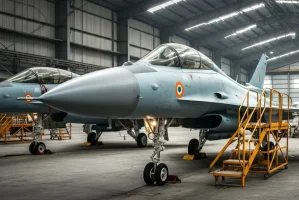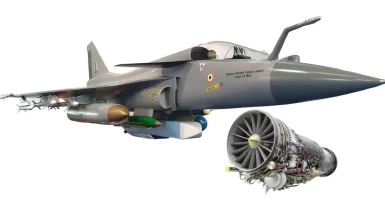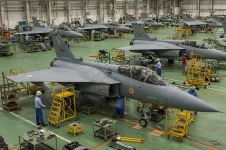- Views: 869
- Replies: 7

DRDO and HAL, the stalwarts of India's defense innovation, are poised to revolutionize fighter jet development with the imminent establishment of an indigenous climate chamber test facility.
This landmark achievement promises to reshape India's domestic fighter jet landscape, offering a myriad of strategic and technological advantages.
Climate Control: A Game-Changer for Fighter Jet Testing
At the heart of this development is the climate chamber's ability to simulate an extraordinary range of weather conditions.From scorching desert heat to the biting cold of high altitudes, the chamber will subject fighter jets to a spectrum of environments, all within a controlled setting.
This eliminates the logistical complexities and time-intensive nature of traditional field trials, which often required relocating jets across the vast Indian landscape.
Expedited Development and Enhanced Efficiency
The climate chamber's impact on development timelines is undeniable. By significantly accelerating testing cycles, the Indian Air Force (IAF) can anticipate the faster deployment of advanced fighter jets.Furthermore, the controlled environment allows for continuous, year-round testing, unburdened by the vagaries of natural weather patterns. This translates to uninterrupted progress and heightened efficiency throughout the development process.
Cost-Effective Innovation
Traditional weather trials entail substantial logistical expenses, including the transportation of jets, personnel, and support equipment across diverse locations. The climate chamber offers a cost-effective alternative, consolidating testing within a single, adaptable facility.This fiscal prudence allows for the redirection of resources towards research and development, ultimately fostering greater innovation.
Precision and Repeatability: Keystones of Testing
Real-world weather is inherently unpredictable. The climate chamber, on the other hand, offers engineers the ability to recreate precise weather conditions repeatedly.This allows for meticulous data collection and analysis, enabling the refinement of jet designs and the optimization of performance under controlled conditions. Furthermore, the chamber mitigates the risks associated with extreme weather, ensuring the safety of both pilots and test aircraft.
Data-Driven Excellence
The climate chamber facilitates the seamless integration of sophisticated data acquisition systems. Engineers can glean granular insights into jet performance across various weather scenarios.This invaluable data empowers them to refine designs, enhance capabilities, and ensure that Indian fighter jets are resilient and adaptable to any operational environment.
Forging a Path to Self-Reliance
The establishment of this indigenous climate chamber test facility is a testament to India's commitment to self-reliance in fighter jet development. By expediting development timelines, reducing costs, and bolstering technological prowess, India is poised to strengthen its defense capabilities and fortify its position as a global leader in aerospace innovation.This transformative endeavor represents a significant stride towards a future where the skies are guarded by Indian-made fighter jets of exceptional quality and unwavering reliability.





